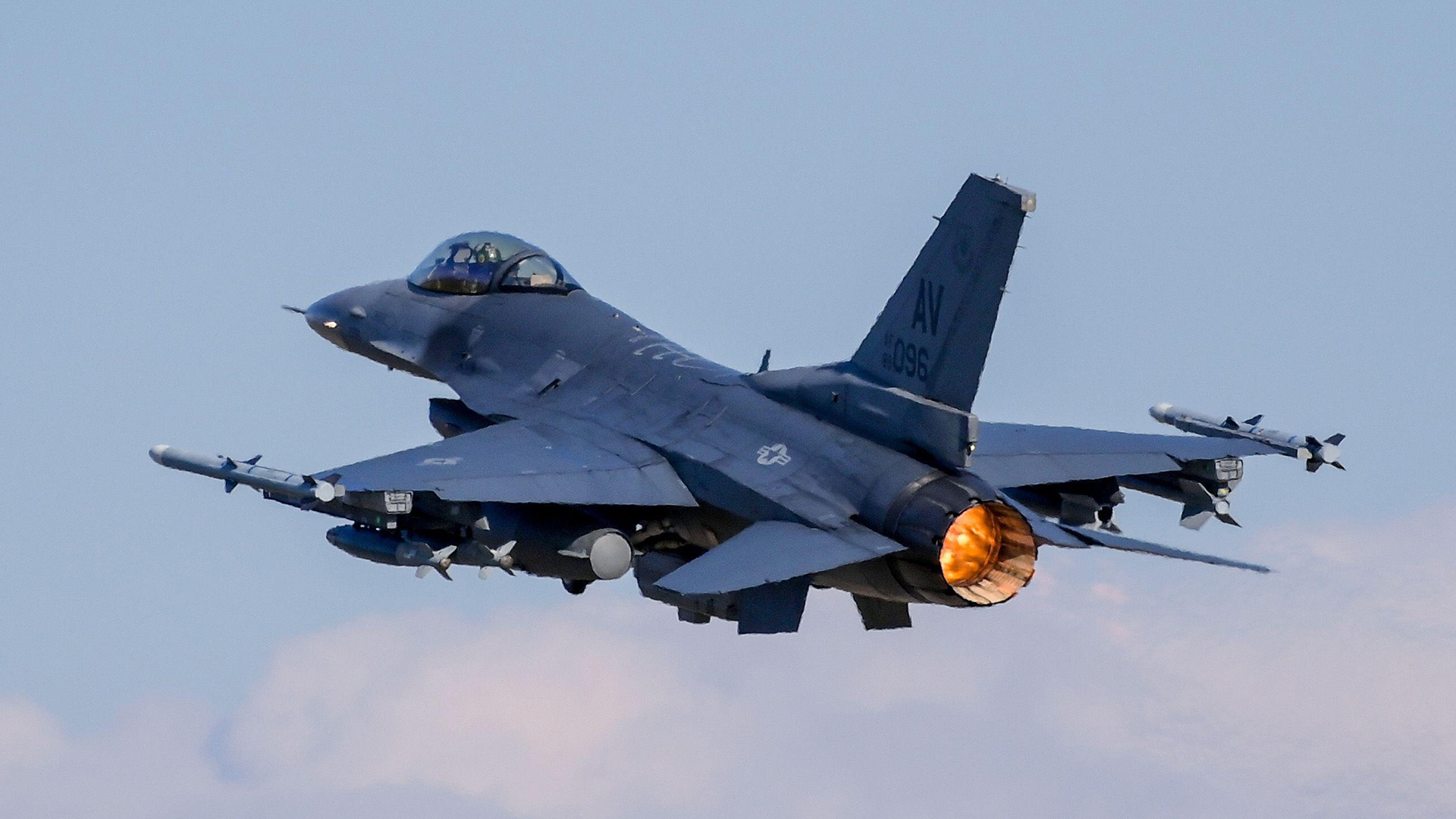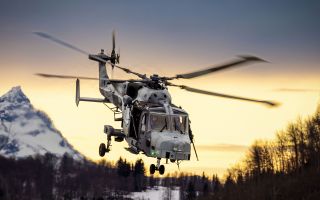Flanker in flames: F-16 may have downed Russian jet – but how do they compare
Video surfaced recently of a Russian Sukhoi Su-35 Flanker multirole fighter burning in a field in Kursk.
How it came down is still a mystery, but there are suspicions it could have been shot down by a Ukrainian F-16 Fighting Falcon.
This is all conjecture because the Ukrainian air force has been rather quiet about how it got there.
But assuming an F-16 was responsible, let's take a look at how the two aircraft stack up against each other.
On paper, in close combat the Russian jet poses a serious threat.
The Flanker is a 4.5 generation fighter and is powered by two thrust-vectoring Saturn engines where the exhaust nozzles move to help steer the aircraft.
Despite weighing 19 tonnes empty, that ability makes the Su-35 highly manoeuvrable.
And thanks to its powerful Irbis-E radar, a Flanker pilot could spot an F-16 from around 250 miles away.

If he did decide to engage, he has a number of options.
He could fire up to half a dozen R-73 short-range missiles, which work via a sighting system on the pilot's helmet, and can hit targets 18 miles away.
Or, if the F-16 was further out, the Flanker could launch one of its four R-77 missiles, which have a 75-mile kill zone.
The latest versions of the jet can also carry up to eight R-27 beyond-visual-range missiles for air-to-air combat.
Then there's the new R-37M, which has a top speed of Mach 6 and can hit targets 250 miles away.
This high-speed missile is designed to hit high-value targets such as AWACS aircraft and air-to-air refuelling tankers.
If attack wasn't an option, with a top speed of Mach 2.25 the Su-35 could just about out-run the F-16 if it needed to.

All that sounds pretty fatal for the Fighting Falcon, but the American-made jet has a few tricks of its own.
While the Russian air force has always favoured manoeuvrability, the F-16 is all about technology – and a rather different approach to air combat.
For starters, the F-16 is about half the weight at nine tonnes, and is much less visible than the Flanker.
The Fighting Falcon's phased array radar can see targets up to 100 miles away in the air and on the ground – and then track and engage dozens of them at the same time – although exactly how many is classified.
However, crucially, most of the 20 or so F-16s that have reached Ukraine are fitted with much older and less effective radar systems.
The F-16 does have an impressive suite of weaponry but, again, these are quite old compared with some of the Russian missiles.
The F-16 can be loaded up with short-range AIM-9 Sidewinders, which are the most widely used air-to-air missiles in the West.
It can also carry the much longer-distance AIM-120 Advanced Medium Range air-to-air missiles.
These are "fire-and-forget" missiles and are connected to something called Link 16, which is essentially a wifi network for Nato.
As of this month, Ukrainian F-16s now have this tactical data system after the F-16 donor countries – the Netherlands, Denmark, Norway and Belgium – supported Ukraine's request to coordinate with Nato's air defence and surveillance networks.
This has massive advantages.
It means Ukrainian F-16s can communicate with Nato assets – an AWACS early warning aircraft, for instance, or a reconnaissance drone – and take targeting data from them.
Importantly, it also means the F-16 doesn't need to use its own radar, which reduces the likelihood of being detected.
The Link 16 system – which is jam-resistant – also means the F-16's missiles can be re-routed mid-flight to engage a different target or evade some sort of threat.
According to the most recent data, the Russians have lost seven Su-35s in the war with Ukraine.
Some will have been downed by surface-to-air missiles while on SEAD (suppression of enemy air defence) missions, hunting Ukrainian air defence batteries.
It's not clear whether any others have been shot down by Ukrainian jets.
In a straight air-to-air duel, the Russian fighter might have the advantage because of its super-manoeuvrability.
But at long range the US jet is more effective - particularly when it' coordinating with other platforms like an AWACS.
The F-16's digital platform means it can avoid that close contact - and open fire from a distance.
And that's a fate that could well have befallen that smouldering Su-35.









